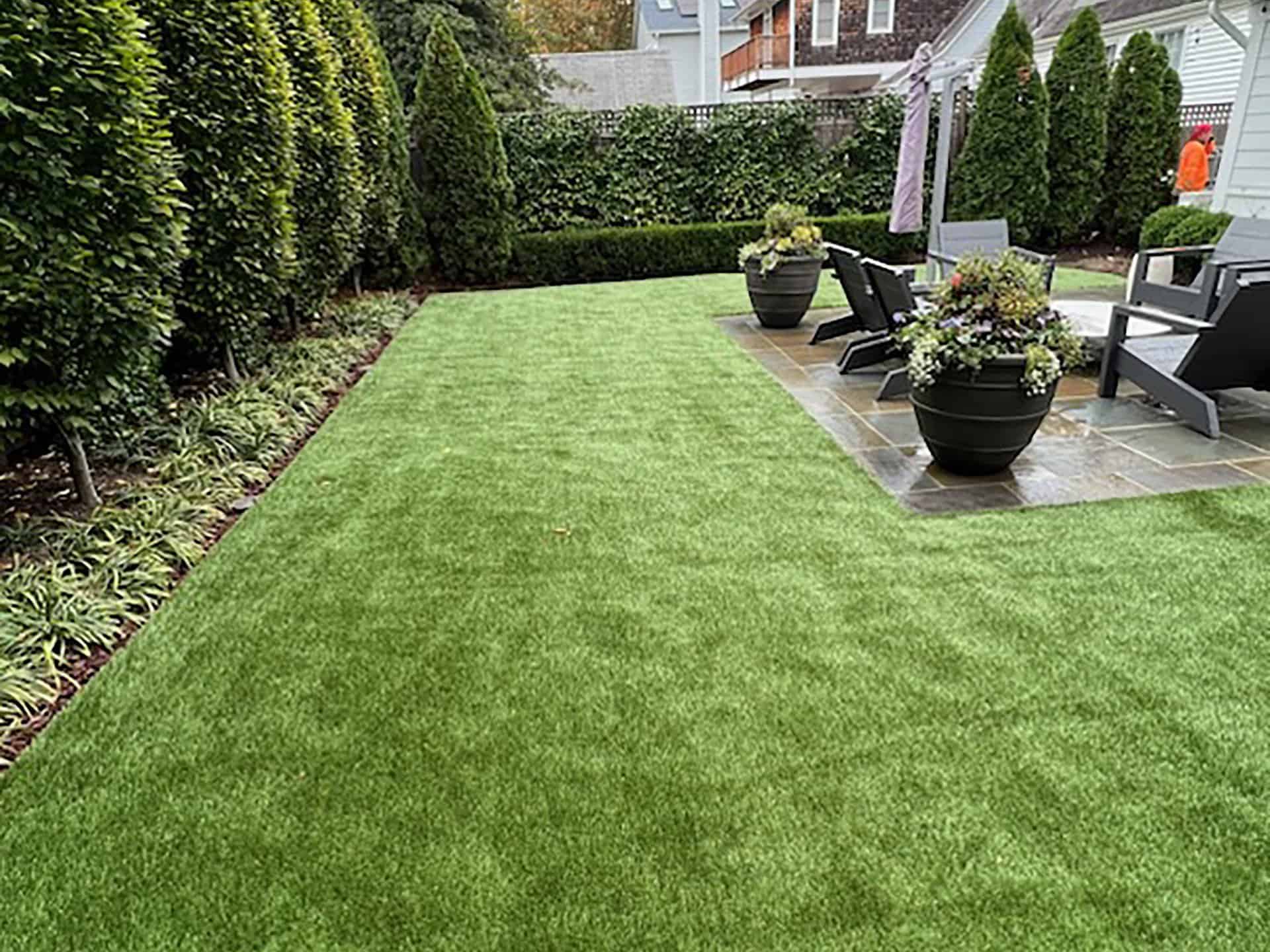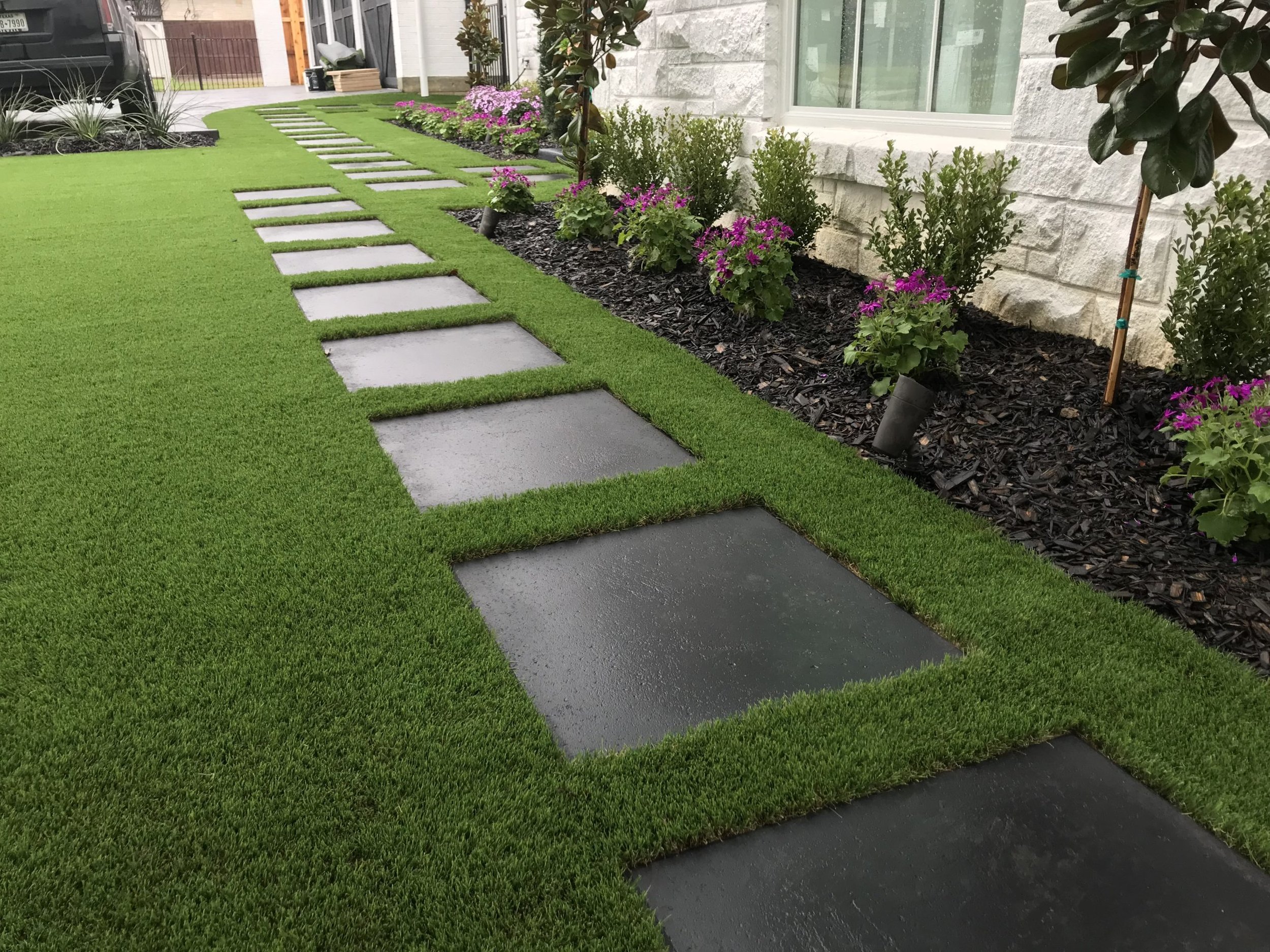Durable Arizona Artificial Turf for Home and Business Applications
Durable Arizona Artificial Turf for Home and Business Applications
Blog Article
See Why Homeowners Prefer Synthetic Grass for Sustainable Landscaping Practices
As home owners increasingly prioritize sustainability in landscape design, synthetic grass has become an engaging alternative to traditional turf. Its ability to conserve water, reduce maintenance efforts, and minimize environmental influence placements it as a practical choice for those seeking eco-friendly options. The aesthetic allure and flexibility of fabricated grass provide to varied style choices. Nevertheless, the ramifications of this change expand beyond simple ease and aesthetics, prompting a better examination of just how these choices influence wider ecological results. What remains to be explored is the complete range of benefits that synthetic grass can provide to property owners and the atmosphere alike.
Water Preservation Perks
One of the most considerable benefits of fabricated grass is its duty in water preservation. In comparison, fabricated turf eliminates this need completely, as it does not require irrigation.
In addition, the installment of artificial grass can add to a more lasting landscape. Property owners can substantially lower their water costs, allowing for reallocation of sources to other ecological efforts or household uses. Furthermore, synthetic grass is made to stand up to numerous weather conditions without the requirement for supplementary watering, making it a perfect option for regions encountering water deficiency.
The ecological advantages extend beyond instant water financial savings. By minimizing water usage, synthetic grass assists to mitigate the effects of environment change, protecting vital environments that are threatened by excessive water removal. As sustainable landscape design techniques acquire grip, synthetic grass emerges as an accountable option for home owners seeking to produce environmentally friendly outdoor spaces.
Reduced Upkeep Efforts
Synthetic grass substantially lowers maintenance initiatives compared to conventional turf yards. With man-made lawn, home owners can eliminate the lengthy tasks connected with natural landscape design, such as mowing, feeding, and weeding. This not only saves beneficial time however likewise decreases physical labor, making lawn treatment obtainable for people of every ages.
Among the most notable benefits is the lack of normal mowing. Traditional lawns need frequent trimming to keep an aesthetically pleasing elevation, whereas synthetic lawn remains regularly lush without the need for cutting. In addition, homeowners no longer need to apply fertilizers or pesticides, which are usually called for to keep natural lawn healthy and balanced. This shift not just lightens the work but also advertises a neater, more consistent appearance year-round.
Furthermore, synthetic grass is resilient and sturdy, requiring very little upkeep beyond periodic brushing and washing to eliminate debris. This simplicity of maintenance permits home owners to appreciate their exterior areas without the continuous fear of maintenance, providing more time for leisure and household tasks. Eventually, the reduced upkeep initiatives related to synthetic grass make it an enticing choice for those looking for a low-maintenance, aesthetically appealing landscape.

Environmental Influence Decrease
There is an expanding acknowledgment of the environmental benefits related to synthetic turf, specifically in terms of water conservation and lowered chemical usage. Standard lawns call for significant amounts of water, specifically in drought-prone regions, causing raised strain on local water sources. On the other hand, synthetic grass removes the requirement for watering, considerably lowering water consumption and advertising sustainability.
Additionally, standard grass maintenance commonly entails the application of plant foods, pesticides, and herbicides, which can add to soil and water contamination. Synthetic grass reduces this ecological risk by requiring very little upkeep and essentially eliminating the requirement for hazardous chemicals. This not only improves soil health and wellness but additionally safeguards regional ecological communities from toxic runoff.
Additionally, the production of all-natural visit homepage yard yards usually includes the use of nonrenewable fuel sources for trimming and landscape design tools, more adding to greenhouse gas discharges. By selecting synthetic lawn, house owners can significantly decrease their carbon footprint connected with yard treatment activities.
Aesthetic Appeal and Adaptability
Along with its ecological benefits, synthetic grass offers significant aesthetic appeal and adaptability for landscaping. Home owners can attain a lavish, environment-friendly appearance year-round, eliminating the seasonal variations typically related to natural turf. This consistent visual not only enhances the aesthetic charm of a building however likewise adds to a refined and well-kept appearance.
Furthermore, synthetic grass is readily available in a variety of appearances, styles, and shades, permitting personalization to match individual preferences and layout motifs - Artificial turf companies phoenix. Whether made use navigate to this website of in domestic yards, business areas, or leisure locations, it can seamlessly integrate right into diverse landscaping styles, from modern minimal to rich tropical settings
The convenience of artificial lawn expands past mere appearance; it can be installed in various locations, including roofs, patios, and even indoor spaces, creating possibilities for special landscaping services. Additionally, it appropriates for an array of activities, from kids's play locations to pet-friendly atmospheres, supplying capability without jeopardizing design.
Eventually, the aesthetic appeal and versatility of synthetic grass make it an appealing option for property owners looking for sustainable landscape design solutions that do not give up elegance for ecological obligation.

Long-Term Price Cost Savings
Among the most compelling benefits of synthetic grass is its potential for lasting expense financial savings. Unlike natural grass, which needs routine upkeep-- consisting of mowing, watering, fertilizing, and insect control-- synthetic grass considerably lowers these continuous expenses. Homeowners can save a substantial quantity on water expenses, particularly in areas where water shortage is a pressing issue. The removal of yard care solutions even more adds to monetary savings, as there is no requirement for specific equipment or labor.
Furthermore, synthetic grass has a life-span of 15 to 25 years, depending upon its quality and use. This toughness reduces replacement prices, making it an extra economical selection in the future. Furthermore, directory the initial investment in synthetic grass can frequently be recouped via the financial savings accumulated with time.
While the in advance cost may seem higher contrasted to sod installment, the collective savings from minimized upkeep and water use commonly outweigh these initial expenses. Ultimately, the adoption of synthetic grass not only advertises a lasting landscaping option however likewise uses property owners a monetarily wise option that aligns with long-lasting budgeting objectives.
Final Thought
Artificial turf emerges as an engaging choice for sustainable landscape design, supplying substantial benefits in water conservation, decreased maintenance initiatives, and diminished environmental effect. As areas significantly focus on environmentally pleasant methods, the fostering of artificial turf represents a dynamic action towards achieving lasting and resistant landscapes.
Furthermore, artificial turf is designed to stand up to various climatic problems without the demand for supplementary watering, making it a perfect selection for regions encountering water shortage. (Turf installation phoenix az)

Synthetic turf arises as an engaging option for lasting landscaping, using significant benefits in water preservation, lowered maintenance efforts, and diminished environmental influence.
Report this page